Historic Fort Wayne and Burial Mound Site
Introduction
Text-to-speech Audio
Images
Aerial View of Historic Fort Wayne
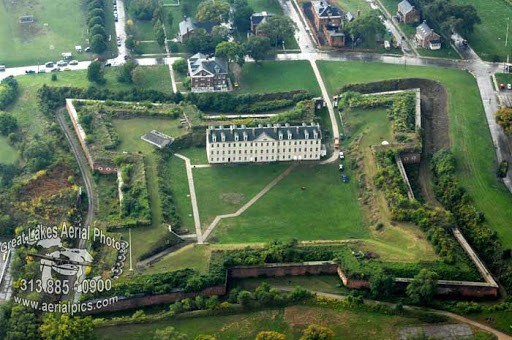
Cord-wrapped Wayne Ware Vessel; Hopewell Tradition, ca. 600-1000 CE; Ceramic. Ceramics are a common occurrence in Late Woodland burial mounds. This excavated vessel is not only remarkable due to its intact state, but also as a representation of Wayne ware, a pottery tradition unique to Detroit River region and is distinguished by cordmarked decorations but otherwise plain and utilitarian in use.
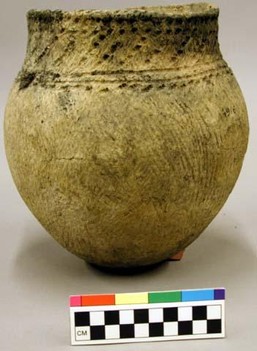
Ornaments Made of Marine Shells; Hopewell Tradition, ca. 600-1000 CE; Shell. Hopewell burials were sophisticated in nature due to the array of foreign goods found in assemblages as a result of the Hopewell exchange system. Marine shells such as these ornaments would not have been found in the Great Lakes and might have come from as far south as the Gulf of Mexico.
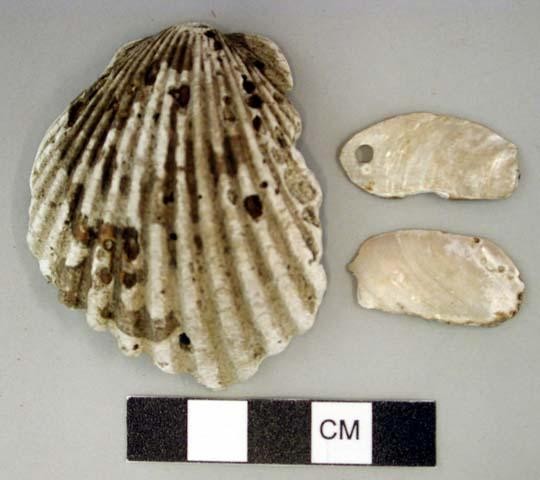
The sole intact burial mound at Fort Wayne, now protected by a fence.
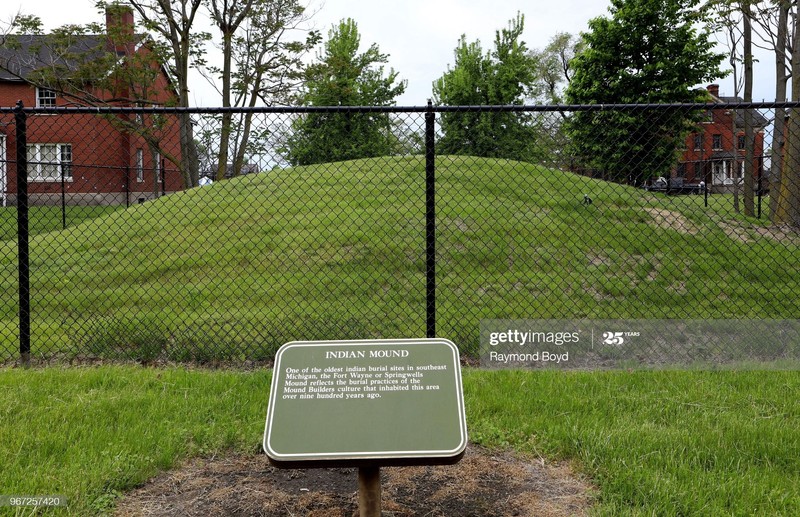
Grave Marker of Peter Audrain, Esq.; American, made in Detroit, 1820; Sandstone. For a man who led an accomplished but subtle life, Peter Audrain’s afterlife is full of ambiguity. It is unknown how and why his grave marker arrived at Fort Wayne, but it is known that his is possibly the only surviving grave marker of someone buried at the original Ste. Anne Cemetery.
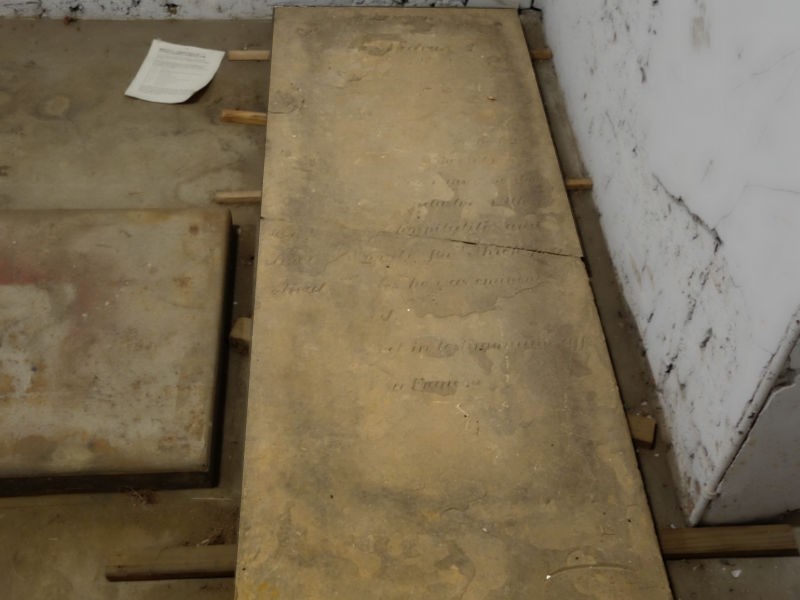
Two Cylindro-conoidal Bullets; American, c. 1864; Metal.These two bullets represent those that have been recovered at Historic Fort Wayne. The fort was used to train hundreds of men who would be sent to fight in the American Civil War. Each bullet serves a reminder of the deadly cost of war.
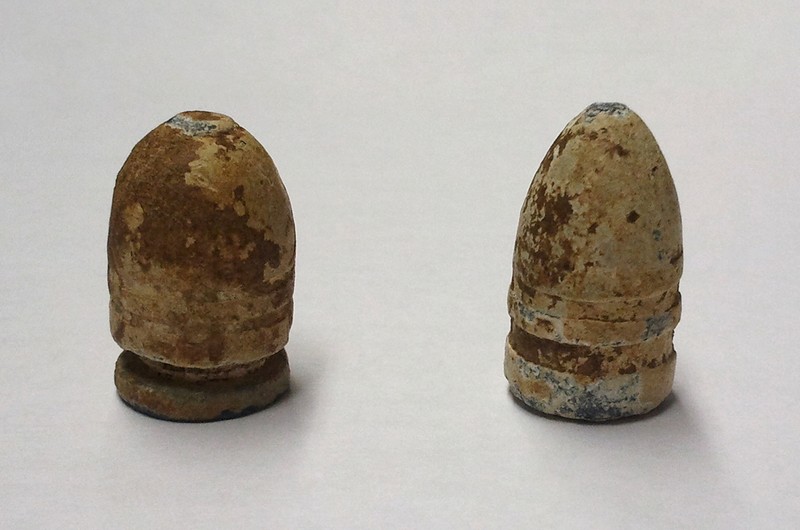
Backstory and Context
Text-to-speech Audio
For thousands of years, indigenous groups of the Great Lakes Region, referred to as the Anishinaabe, used the land surrounding the Detroit River to fish, hunt, and to bury their dead. The deceased were buried in earthen structures known as burial mounds where their bodies and other grave goods were also interred. Several of these mounds dotted the Detroit area and had objects dating as far back as the Early Woodland period (1000-200 BCE).
The mounds of southeastern Michigan were the creation of the Hopewell culture. This was not a tribe, but broad cultural traditions shared by Native American groups throughout the midwestern and northeast United States during the Woodland Period through expansive trade networks. One of the most outstanding attributes of these traditions were the elaborate burial customs that were likely based on one’s social status. Depending on their position, individuals received differing mortuary treatments; individuals occupying lower statuses had fewer grave goods and less elaborate bodily preparations (such as cremation), while more important people had their body wrapped, bound and buried with more plentiful grave goods of more lavish quality, such as jewels and metals.
Though practices varied from region to region, Hopewell burials witnessed in southeastern Michigan saw similar mortuary assemblages. Because Hopewell culture was defined by trading between other complexes as well as more sophisticated artisan craftmanship, mortuary treatments in southeastern Michigan reflected these attributes, with materials sourced from other regions being found in Michigan assemblages. These burial traditions persisted from approximately 100 B.C.E. until 500 C.E. when the tradition declined. The Woodland Period ended around 1000 C.E.
In the historic period - during the 18th century - the site along the Detroit River was the location of a Potawatomi village. It is unknown if the mounds were built by the Potawatomi specifically, but they remained undisturbed during the tribe’s occupation from 1710 to 1771, where they were trading allies with the French in nearby Fort Ponchartrain du Detroit. While such mortuary complexes were considered sacred, some communities lived in tandem with the mounds. Other Great Lakes groups, such as the Iroquois, even used mound sites in mortuary festivals, which might reflect the Woodland tradition of mound sites as trade fair centers where both economic and mortuary practices took place.
After the Potowatami left the area by the 1780s, the mound site became a center of many political affairs between indigenous people and their white allies and enemies, most notably the War of 1812 and the signing of the Treaty of Springwells. By the mid 19th century, there were no more permanent indigenous settlements in the area.
Construction of Fort Wayne began in the 1840s as a means of defense against Canada during a period of international conflict. It would be Detroit's third fort and the first built by Americans, succeeding the French Fort Ponchartrain and the British Fort Lernoult. Although the fort never saw action against Canada, it has seen exceptional movement during other periods of social upheaval. Sadly, for the fort to be constructed, all except one burial mound was flattened, an event not uncommon to have happened toward other burial complexes in southeastern Michigan. Despite the occupation of the site by the U.S. military and destruction of the mounds, the land that Fort Wayne stands on is still considered sacred by the indigenous people of the region. The remaining mound, which was excavated in the 1950s, was otherwise left intact – with two burials still interred – and is protected on the site. Indigenous people make pilgrimages to the mound to honor it. Historic Fort Wayne has one of the only remaining burial mounds in southeast Michigan.
Unlike the previous Detroit forts, Fort Wayne did not have a cemetery adjacent to it, most likely because it was used as a garrison for training troops. There is one peculiar artifact attributed to a Euro-American burial: a grave marker belonging to Peter Audrain, Esq. Born in 1725 in France, Audrain first arrived in America in 1777 during the American Revolution. He became an American citizen in 1781 and was a secretary for a French diplomat in Pennsylvania before moving to Detroit in 1796 at the age of 71. There, he served in several city and county positions until he was too old to do so by the age of 94. He died a year after his "retirement" in 1820. Audrain was a member of Detroit's French community and was therefore a member of Ste. Anne de Detroit and buried in the accompanying cemetery. By the time of Ste. Anne Cemetery's decommission, though, it's unclear how his tombstone arrived at Fort Wayne.
Despite Fort Wayne lacking a designated cemetery, the site's association with events with high mortality rates, namely the American Civil War, carries an echo on the site. Many of the artifacts excavated from Fort Wayne might have belonged to soldiers who were trained for conflict but never came back to Detroit alive. The fort was also used to retain individuals arrested during the 1967 Detroit Rebellion, a violent conflict that changed the city forever.
Whether two-thousand years ago or 50 years ago, Historic Fort Wayne has been a site symbolizing life, death, and conflict in Detroit.
Sources
Peter Audrain, Esq; Clerk of Everything from Time Immemorial, Historic Fort Wayne Coalition. Accessed December 9th 2020. https://www.historicfortwaynecoalition.com/audrains_tombstone.html.
Norder, John . Stone Tombs and Ancient Ritual: Status Marking and Social Roles In The Early Late Woodland Of Southeastern Michigan. Midcontinental Journal of Archaeology, vol. 28, no. 2. Published Fall 2003. JSTOR.
Charles, Douglas K.. Woodland demographic and social dynamics in the American Midwest: analysis of a burial mound survey. World Archaeology, vol. 24, no. 2. Published October 1st 1992. JSTOR.
The Site's Significance to Native Americans, Historic Fort Wayne Coalition. Accessed December 5th 2020. https://www.historicfortwaynecoalition.com/native_americans.html.
Detroit's American Star Fort with a Mission, Historic Fort Wayne Coalition. Accessed December 9th 2020. https://www.historicfortwaynecoalition.com/historical_insights.html.
Teasdale, Guillaume. Old Friends and New Foes: French Settlers and Indians in the Detroit River Border Region. Michigan Historical Review, vol. 38, no. 235 - 62. JSTOR.
Fort Wayne, Wayne State University: Gordon L Grosscup Museum of Anthropology. Accessed December 11th 2020. http://www.clas.wayne.edu/anthromuseum/Fort-Wayne.
https://motownmission.org/excursionsold/2011/1/26/historic-fort-wayne.html
https://pmem.unix.fas.harvard.edu:8443/peabody/view/objects/asitem/search$0040/27/title-desc?t:state:flow=57275022-a2f5-49f9-b16f-441b0ebb2da8
https://pmem.unix.fas.harvard.edu:8443/peabody/view/objects/asitem/search$0040/8/title-desc?t:state:flow=57275022-a2f5-49f9-b16f-441b0ebb2da8
https://www.gettyimages.no/detail/news-photo/indian-mound-at-historic-fort-wayne-in-detroit-michigan-on-news-photo/967257420
https://www.historicfortwaynecoalition.com/audrains_tombstone.html
https://en.wikipedia.org/wiki/Cylindro-conoidal_bullet
